Credit to IndoAviation0028 for the plane
The Boeing 707 is an American, long-range, narrow-body airliner, the first jetliner developed and produced by Boeing Commercial Airplanes. Developed from the Boeing 367-80 prototype first flown in 1954, the initial 707-120 first flew on December 20, 1957. Pan American World Airways began regular 707 service on October 26, 1958. With versions produced until 1979, the 707 was a swept wing, quadjet with podded engines. Its larger fuselage cross-section allowed six-abreast economy seating, retained in the later 720, 727, 737, and 757 models.
Although it was not the first commercial jetliner in service, the 707 was the first to be widespread, and is often credited with beginning the Jet Age.It dominated passenger air transport in the 1960s, and remained common through the 1970s, on domestic, transcontinental, and transatlantic flights, as well as cargo and military applications. It established Boeing as a dominant airliner manufacturer with its 7x7 series. The initial, 145-foot-long (44 m) 707-120 was powered by Pratt & Whitney JT3C turbojet engines. The shortened, long-range 707-138 and the more powerful 707-220 entered service in 1959. The longer-range, heavier 707-300/400 series has larger wings and is stretched slightly by 8 feet (2.4 m). Powered by Pratt & Whitney JT4A turbojets, the 707-320 entered service in 1959, and the 707-420 with Rolls-Royce Conway turbofans in 1960.
The 720, a lighter, short-range variant, was also introduced in 1960. Powered by Pratt & Whitney JT3D turbofans, the 707-120B debuted in 1961 and the 707-320B in 1962. The 707-120B typically flew 137 passengers in two classes over 3,600 nautical miles [nmi] (6,700 km; 4,100 mi), and could accommodate 174 in one class. With 141 passengers in two classes, the 707-320/420 could fly 3,750 nmi (6,940 km; 4,320 mi) and the 707-320B up to 5,000 nmi (9,300 km; 5,800 mi). The 707-320C convertible passenger-freighter model entered service in 1963, and passenger 707s have been converted to freighter configurations. Military derivatives include the E-3 Sentry airborne reconnaissance aircraft and the C-137 Stratoliner VIP transport. In total, 865 Boeing 707s were produced and delivered, not including 154 Boeing 720s.
CONTINENTAL AIRLINES
Continental Airlines, simply known as Continental, was a major American airline founded in 1934 and eventually headquartered in Houston, Texas. It had ownership interests and brand partnerships with several carriers.
Continental started out as one of the smaller carriers in the United States, known for its limited operations under the regulated era that provided very fine, almost fancy, service against the larger majors in important point-to-point markets, the largest of which was Chicago/Los Angeles. However, deregulation in 1978 changed the competitive landscape and realities, as noted by Smithsonian Airline Historian R. E. G. Davies, "Unfortunately, the policies that had been successful for more than forty years under (Robert) Six's cavalier style of management were suddenly laid bare as the cold winds of airline deregulation changed all the rules—specifically, the balance between revenues and expenditures."[4]
In 1981, Texas International Airlines acquired a controlling interest in Continental. The companies were merged in 1982, moved to Houston, and grew into one of the country's largest carriers despite facing financial and labor issues, eventually becoming one of the more successful airlines in the United States.
Continental and United Airlines merged in an $8.5 billion all-stock merger of equals on October 1, 2010. Continental's shareholders received 1.05 per share in United stock for each Continental share they owned. Upon completion of the acquisition, UAL Corporation changed their name to United Continental Holdings. During the integration period, each airline ran a separate operation under the direction of a combined leadership team, based in Chicago. The integration was completed on March 3, 2012. AlESthough the merged airline retained the United name, it uses Continental's operating certificate and livery. On June 27, 2019, United changed its parent company name from United Continental Holdings to United Airlines Holdings.
- EDIT sorry if the plane is a little smaller than most other crafts size, i wanted to recreate continental flight 11 but i ditched the idea since it was too much of a hassle
or was it?
Specifications
General Characteristics
- Predecessor Boeing 707-320B Continental Airlines
- Successors 1 airplane(s)
- Created On Windows
- Wingspan 89.0ft (27.1m)
- Length 89.8ft (27.4m)
- Height 29.5ft (9.0m)
- Empty Weight N/A
- Loaded Weight 44,240lbs (20,067kg)
Performance
- Power/Weight Ratio 1.066
- Wing Loading 27.4lbs/ft2 (133.8kg/m2)
- Wing Area 1,614.4ft2 (150.0m2)
- Drag Points 24915
Parts
- Number of Parts 447
- Control Surfaces 27
- Performance Cost 1,843

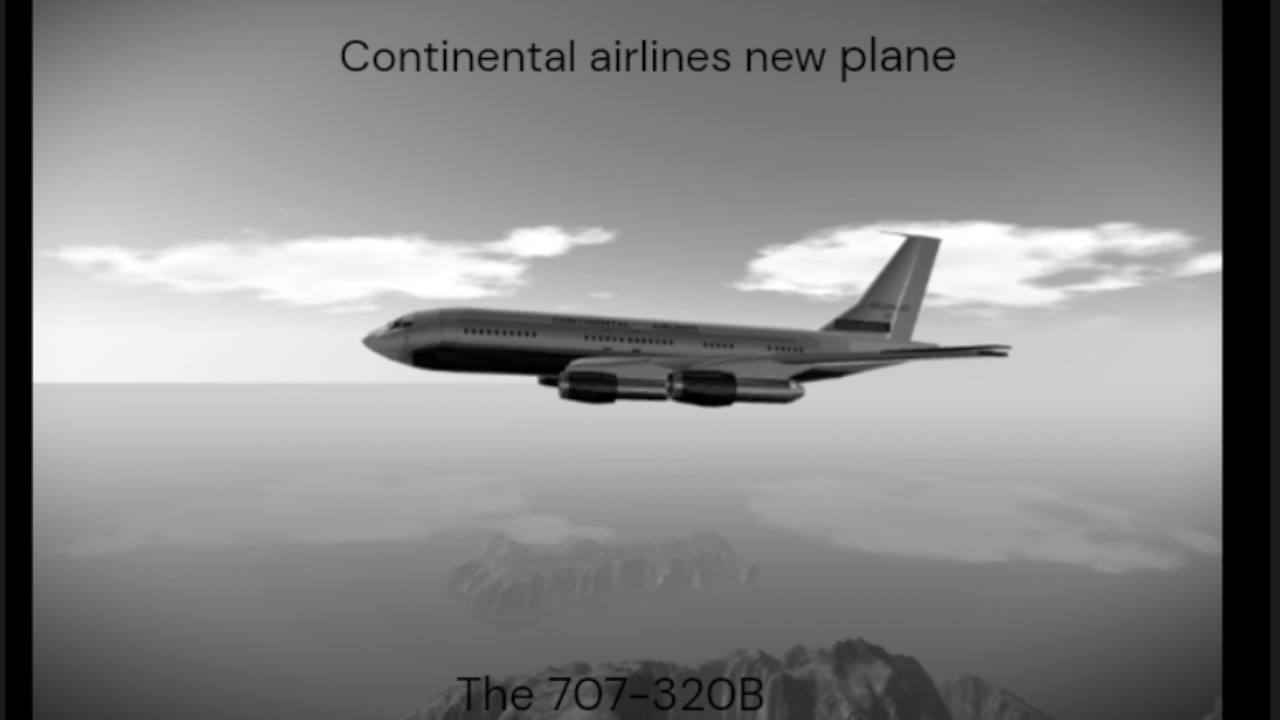

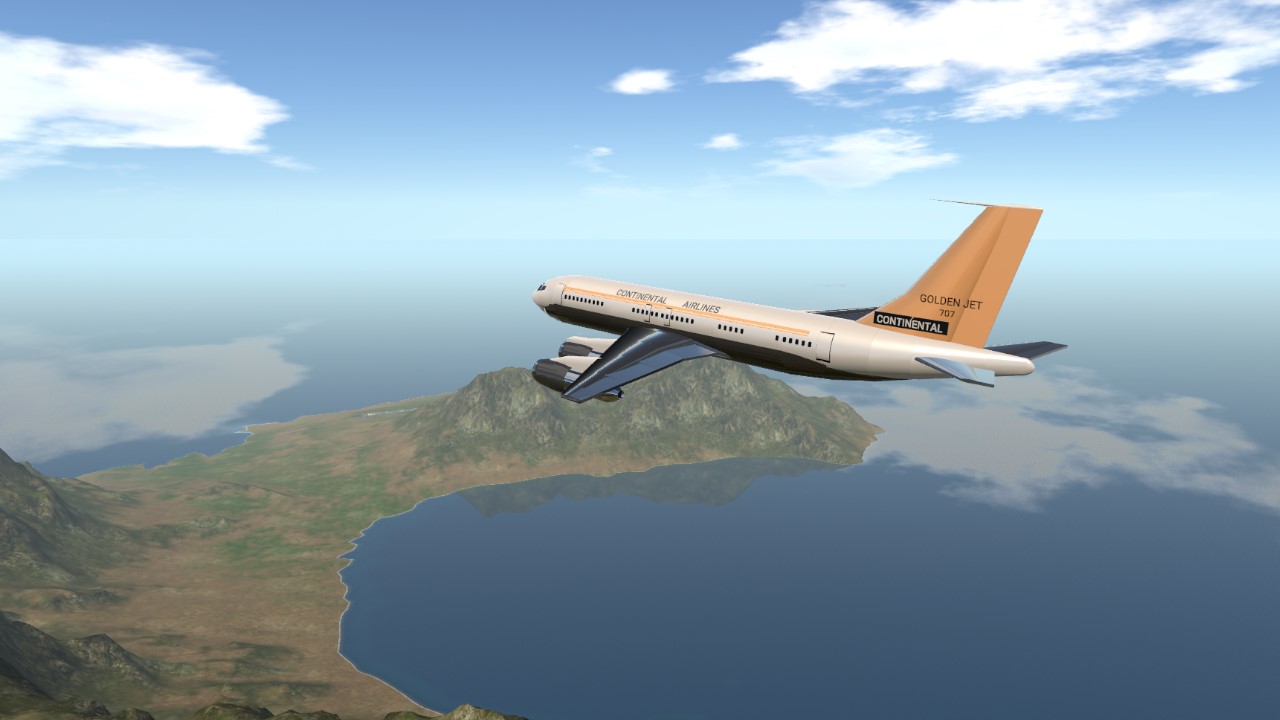
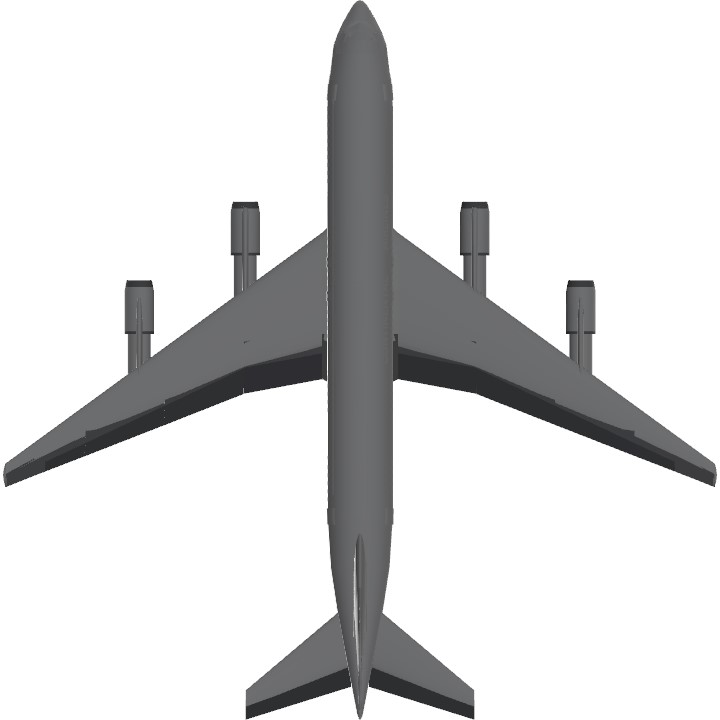
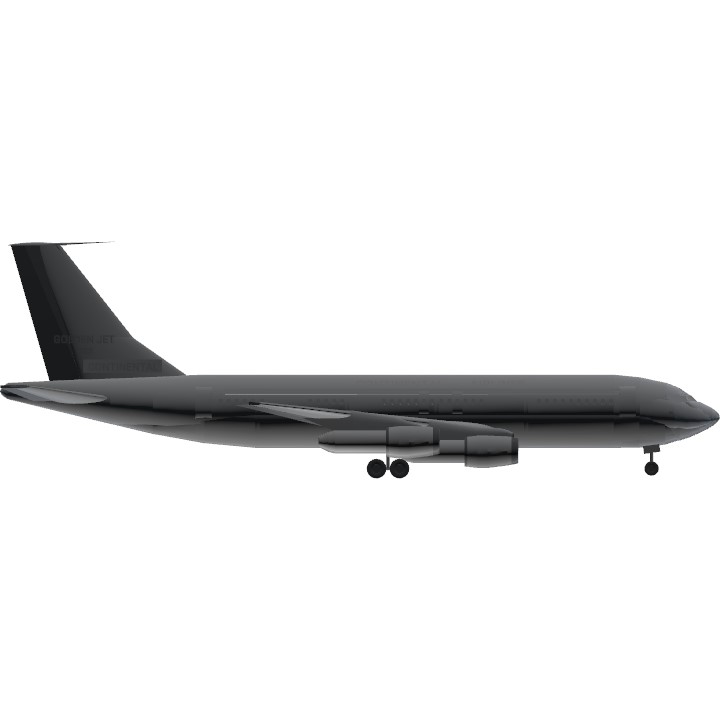
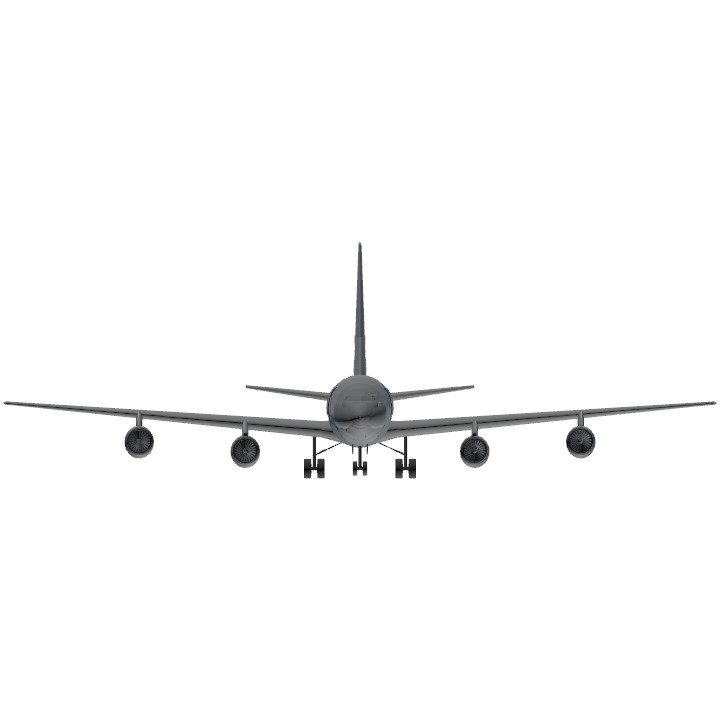
@Transair56 oh ok
@VELDERR Continental flight 11
@Transair56 wdym 1962??
1962…